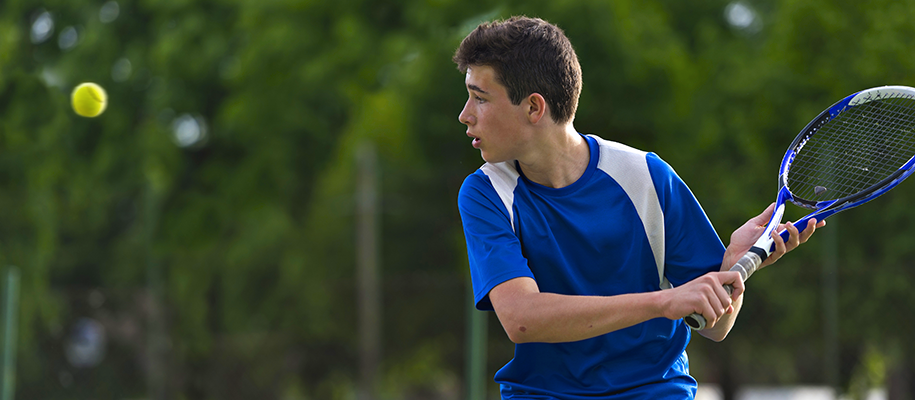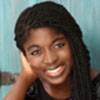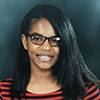Although there’s no gym class for it, yes, visual fitness is a thing! If you’re a college athlete, you know that taking care of your body is critical. What you might not know is there are some simple nutrition tips that can improve your eyesight and hand-eye coordination, which are critical for almost all sports. The way the eyes process information in motion is different from the way the eyes process information in a static position. The hockey goalie who can find the puck in a chaotic blur will have a better save percentage. Just as sports require speed, strength, and endurance, vision is an essential element to improve a student-athlete’s performance in any sport beyond the standard eye chart.
Sports vision therapy
Sports vision training is a type of optometric vision therapy that works on increasing an athlete's ability to see contingent on interrelated skills. Building visual skills is important to increase the performance of the athlete and sport. Sports vision centers often test reaction time, peripheral awareness, and hand-eye coordination to measure dynamic visual acuity.
Vision tests for athletes
Sports vision centers work with athletes to improve depth perception and help convey turns and avoid obstacles, as well as eye tracking ability, the ability to trail and predict the motion of an object. Aside from glasses and contact lenses, there are many benefits eye professionals can offer, such as sports vision training programs tailored and customized to your specific needs. These centers also utilize training tools such as computer simulations and visualization techniques that can help you hit your target. Below are just a few of the many tests sports vision therapy has to offer.
Related: Good Health and Nutrition Tips for College Student-Athletes
Snellen Eye Chart
The Snellen Eye Chart is one of optometrists’ favorite do-it-yourself eye exams. This is the common eye exam where letters are identified in increasingly smaller sizes 20 feet away from the chart. 20/20 vision occurs when all letters on the fourth line from the bottom of the chart can be read. Eyeglasses, contact lenses, or LASIK are all options to improve or correct visual acuity and refractive error. Undetected impairments can have huge disadvantageous effects on athletic performance.
Eye-tracking devices
Vision tracking and coordination ability are heavily related. Eye-tracking devices using sensor technology measure eye positions and movement to know precisely when and where your eyes are focused. Often used in the classroom to analyze a student’s vision system, this interface gathers information to determine the presence and consciousness of the athlete. This data is then used to determine a prescriptive program to improve athletic behavior and attentiveness.
Contrast sensitivity test
Poor contrast sensitivity can lead to poor vision in situations of low light, fog, or glare. The neurologic ability to see differences between light and dark increments of light can affect performance in games of varying weather conditions. Dirty glasses and contact lenses can also decrease contrast sensitivity immensely, so be mindful of your eye hygiene. If you have significantly reduced contrast sensitivity, your optometrist may recommend eyeglasses and lenses with specific tints, anti-reflective coating, or wavefront technology to improve your visual ability.
Related: What You Need to Know About Health Insurance for Student-Athletes
Visual processing speed, spatial recognition, and hand-eye coordination
Also helpful for cruising through the SAT or GMAT, techniques for visual processing speed can drastically improve sports performance. The ability to see a situation, assess surroundings, and react instantly to objects at high speed can be measured and trained. Visual simulations can be used to reproduce competitive environments to evaluate not only performance data but also psycho-physiological changes. Find an eye professional covered under your insurance with a specialty in sports vision to meet your sport-specific visual needs. Working with an optometrist that understands your individual needs as a student-athlete can help them recommend proper eyeglasses or contact lenses, or even design a program that will maximize your visual ability.
The prevention of sports injuries
Eye protection should be considered by all athletes—especially those in extreme contact sports. Sports-related eye injuries can be prevented with proper protective eye gear, such as UV block contacts and sunglasses if you’re playing outdoors, or anti-glare contacts. Our lives are heavily dependent on our vision, and any injury or impairment can have radical effects on our lifestyles. Untreated or undiagnosed vision impairments not only impact sports performance but also social and mental development. And remember that exercise and nutrition go hand in hand, so make sure you’re considering your eating habits.
Related: What Student-Athletes Should Do About Major Injuries
Most athletes focus on their general physical health and fitness for top performance in their sport, but they often forget just how important their vision is to their ability to participate in athletics. Make sure you’re being attentive to every part of your body's needs and get your eyes checked out regularly for health. Talk to your optometrist and see if vision therapy is right for you and your eyes to further your sports performance in college.
Want more student-athlete advice? Check out our College Athletics section to help you get ready for your college sports career!








